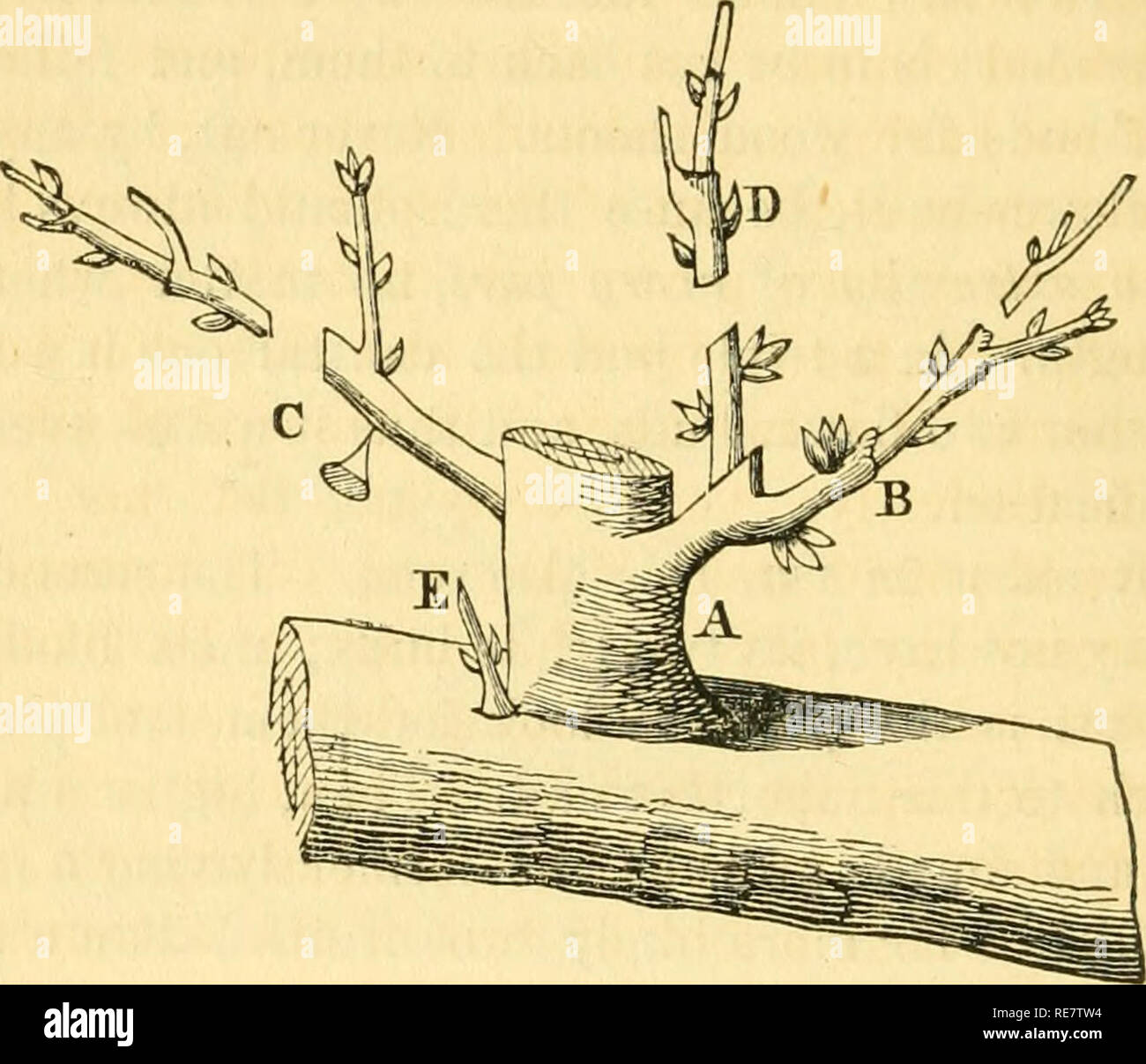. Cordon training of fruit trees, diagonal, vertical, spiral, horizontal, adapted to the orchard house and open-air culture. Fruit-culture. 36 CORDON TRAINING. Leave these alone, and cut down close to them, as seen in FIG. 1. The branch is then, with its short right shoot, ready for wood-bearing or not, as the case requires, and its long left shoot cvit for fruit, havnig a chance thereof at the two triple buds on the second growth^ and on the neat little lateral be- fore so commended. As the nearer wood is the ripest, if the fruit appear on the triple buds below, so much the better; at any rat

Image details
Contributor:
The Book Worm / Alamy Stock PhotoImage ID:
RE7TW4File size:
7.1 MB (251.3 KB Compressed download)Releases:
Model - no | Property - noDo I need a release?Dimensions:
1705 x 1465 px | 28.9 x 24.8 cm | 11.4 x 9.8 inches | 150dpiMore information:
This image is a public domain image, which means either that copyright has expired in the image or the copyright holder has waived their copyright. Alamy charges you a fee for access to the high resolution copy of the image.
This image could have imperfections as it’s either historical or reportage.
. Cordon training of fruit trees, diagonal, vertical, spiral, horizontal, adapted to the orchard house and open-air culture. Fruit-culture. 36 CORDON TRAINING. Leave these alone, and cut down close to them, as seen in FIG. 1. The branch is then, with its short right shoot, ready for wood-bearing or not, as the case requires, and its long left shoot cvit for fruit, havnig a chance thereof at the two triple buds on the second growth^ and on the neat little lateral be- fore so commended. As the nearer wood is the ripest, if the fruit appear on the triple buds below, so much the better; at any rate there are plenty of chances, because this little lat- eral, though born, say in August, will probably be quite ripe —at any rate it will be in the orchard-house.. 2. FRUIT-SPURS^ ON THE PEACH—ALTERNATE PRUHING. SECOND APPEARANCE. In FIG. 2 we have the same spur A, and on it the same second growth B and C, only B has developed into two long shoots, and these have been successively treated as recom- mended. In the winter the new development D is cut back to two new buds, generally triple, and its fellow left long for fruit, of which there must be a great chance somewhere or other. You can hardly fail now. The left shoot C has borne a peach or nectarine, where the triangle near C indicates its place. After bearing it is cut back, so as to secure new wood. In succeeding years, by the time the wall is covered, say in four years, all the leaders should have their spurs crowded. Please note that these images are extracted from scanned page images that may have been digitally enhanced for readability - coloration and appearance of these illustrations may not perfectly resemble the original work.. Br©haut, T. Collings; Hovey, Charles Mason, 1810-1887. Boston, Hovey & co.